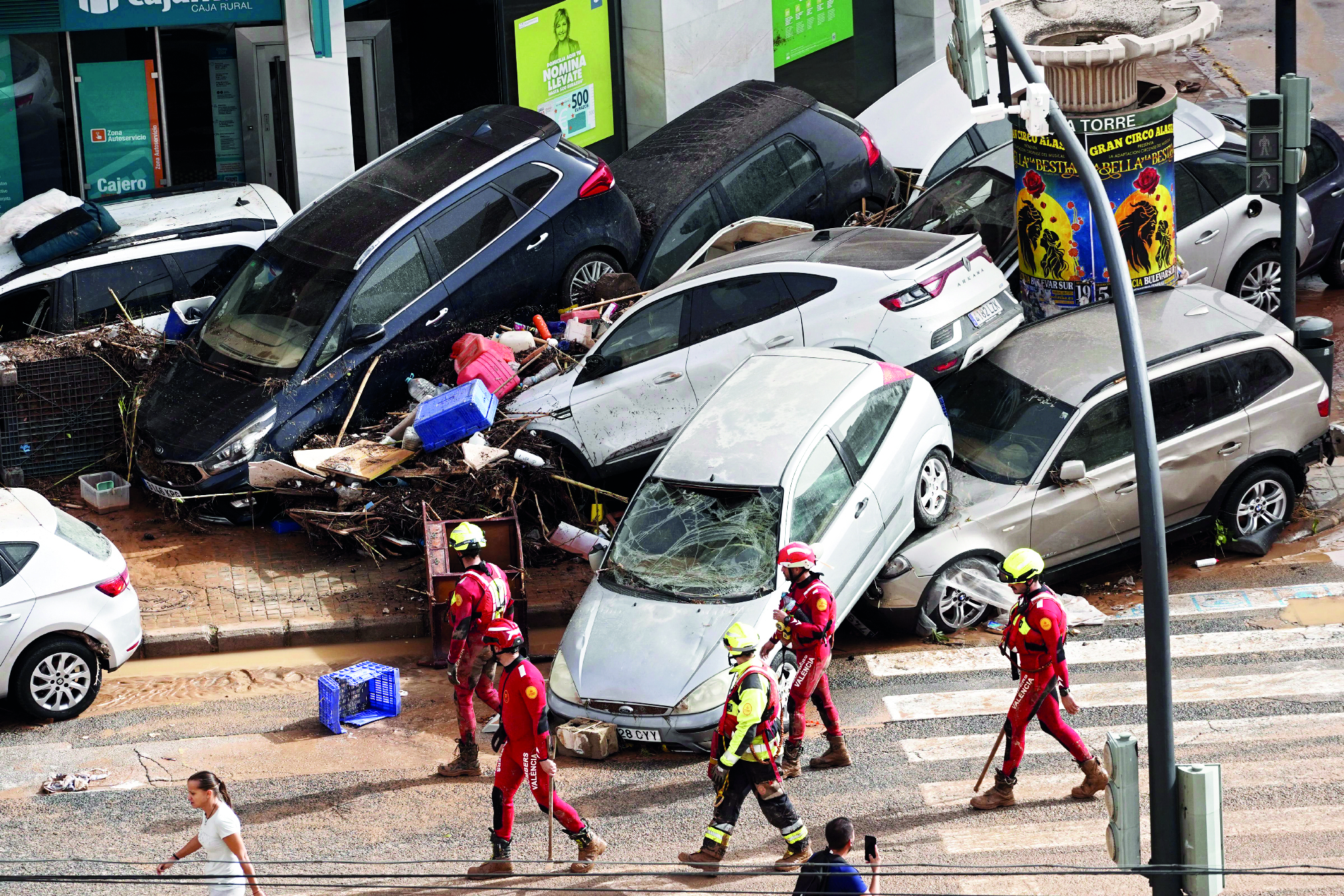Crashing waves in hilltop village, night of terror from Spain’s floods

Chiva (Spain): Irene Cuevas will never forget the sound of the waves crashing below her apartment’s balcony.
If only there had been a flash of lightning in the darkness to let her glimpse what sounded like a roaring sea.
“It was a constant fear because we didn’t have light to see by,” Cuevas told The Associated Press. “We could hear the roar of the waves, which was unbelievable. The street was completely flooded and we were hoping for some lightning so that we could at least see what situation we were in. It was all waves, currents everywhere.
“We have that sound of the waves burned in our memory.”
The devastating flash floods in eastern Spain this week that claimed over 200 lives and destroyed countless homes and livelihoods also seared a scar of terror in many survivors. Cuevas, a 48-year-old embryologist, is a resident of Chiva, a village perched on a hill about 30 kilometres from Valencia city, whose southern outskirts were likewise ravaged by the floods on Tuesday and Wednesday.
Chiva got more rain in eight hours than the town had experienced in the preceding 20 months. Cuevas was at home and saw how the gorge dividing her village suddenly overflowed with rushing water.
The tsunami-like wall of water claimed at least seven lives in Chiva, home to some 16,000 people, and the search goes on for more missing, either in collapsed houses or in the gorge.
“It was terrifying because that night it began to rain and the water began to overflow the gorge and started carrying away cars and trees,” Cuevas said. “The underpasses of the bridges started to clog with debris, and the water started to flow through the entire village.”
In a matter of minutes, flash floods caused by heavy downpours in eastern Spain swept away almost everything in their path. With no time to react, people were trapped in vehicles, homes and businesses.
Four days later, authorities have recovered 213 bodies — most of them in the eastern Valencia region. They continued to search for an unknown number of missing people on Saturday.
Thousands of volunteers were helping to clear away the thick layers of mud and debris that still covered houses, streets and roads, all while facing power and water cuts and shortages of some basic goods. Inside some of the vehicles that the water washed into piles or crashed into buildings, there were still bodies waiting to
be identified.
What happened?
The storms concentrated over the Magro and Turia river basins and, in the Poyo riverbed, produced walls of water that overflowed riverbanks, catching people unaware as they went on with their daily lives on Tuesday evening and early Wednesday.
In the blink of an eye, the muddy water covered roads, railways and entered houses and businesses in towns and villages on the southern outskirts of Valencia city. Drivers had to take shelter on car roofs, while residents took refuge on higher ground.
Spain’s national weather service said that in the hard-hit locality of Chiva it rained more in eight hours than it had in the preceding 20 months, calling the deluge “extraordinary.”
When authorities sent alerts to mobile phones warning of the seriousness of the flooding and asking people to stay at home, many were already on the road, working or covered in water in low-lying areas or underground garages, which became death traps.
Why did these massive flash floods happen?
Scientists trying to explain what happened see two likely connections to human-caused climate change. One is that warmer air holds and then dumps more rain. The other is possible changes in the jet stream — the river of air above land that moves weather systems across the globe — that spawn extreme weather.
Climate scientists and meteorologists said the immediate cause of the flooding is called a cut-off lower pressure storm system that migrated from an unusually wavy and stalled jet stream. That system simply parked over the region and poured rain. This happens often enough that in Spain they call them DANAs, the Spanish acronym for the system, meteorologists said.
And then there is the unusually high temperature of the Mediterranean Sea. It had its warmest surface temperature on record in mid-August, at 28.47 degrees Celsius (83.25 degrees Fahrenheit), said Carola Koenig of the Centre for Flood Risk and Resilience at Brunel University of London.
The extreme weather event came after Spain battled with prolonged droughts in 2022 and 2023. Experts say that drought and flood cycles are increasing with climate change.
Has this happened before?
Spain’s Mediterranean coast is used to autumn storms that can cause flooding, but this episode was the most powerful flash flood event in recent memory.
Older people in Paiporta, at the epicenter of the tragedy, say Tuesday’s floods were three times as bad as those in 1957, which caused at least 81 deaths. That episode led to the diversion of the Turia watercourse, which meant that a large part of the town was spared of these floods. Valencia suffered two other major DANAs in the 1980s, one in 1982 with around 30 deaths, and another one five years later that broke rainfall records. The flash floods also surpassed the flood that swept away a campsite along the Gallego River in Biescas, in the northeast, killing 87 people,
in August 1996. agencies



